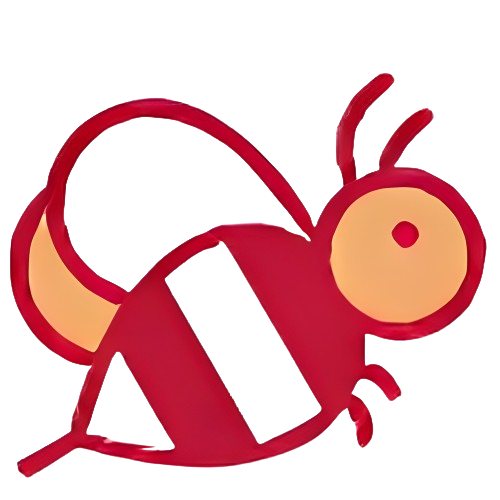


The James Webb Space Telescope has once again taken us on a journey through the depths of space, this time capturing a colorful and detailed image of the Sombrero galaxy. With its powerful mid-infrared instrument, the telescope reveals a new perspective of the galaxy's outer ring, filled with intricate clumps of dust and carbon-containing molecules. Take a look at this breathtaking image and discover a new side of the Sombrero galaxy.
The James Webb Space Telescope Captures a Detailed Image of the Sombrero Galaxy
The James Webb Space Telescope (JWST) has captured a stunning new image of the Sombrero galaxy, offering scientists a fresh perspective on this nearby celestial object. The image reveals intricate details of the galaxy's outer ring, showcasing a vibrant tapestry of dust and carbon-containing molecules.
Background
The Sombrero galaxy, also known as M104, is a relatively close spiral galaxy located approximately 28 million light-years away in the constellation Virgo. It is known for its distinct sombrero-shaped appearance, with a bright central bulge surrounded by a dusty outer ring.
JWST's Observations
The JWST's powerful mid-infrared instrument, known as MIRI, allows it to detect heat and faint light emitted by objects in space. This capability has enabled the telescope to capture an unprecedented view of the Sombrero galaxy's outer ring, revealing a remarkable level of detail.
The image shows intricate clumps of dust and carbon-containing molecules, providing insights into the galaxy's star formation and chemical composition. Scientists believe that these clumps could be regions where new stars are forming, or remnants of supernova explosions.
Implications for Research
The JWST's image of the Sombrero galaxy has significant implications for scientific research. By studying the galaxy's outer ring in unprecedented detail, astronomers hope to gain a better understanding of:
Top 5 FAQs
Q1: What is the James Webb Space Telescope?
A1: The JWST is a next-generation space telescope designed to replace the Hubble Space Telescope. It is a collaboration between NASA, the European Space Agency, and the Canadian Space Agency.
Q2: What is the significance of the Sombrero galaxy image?
A2: The image provides a new perspective on the galaxy's outer ring, revealing intricate details that have never been seen before. It offers scientists valuable insights into star formation and galaxy evolution.
Q3: How different is the JWST image from previous ones?
A3: The JWST image is much sharper and has a higher resolution than previous images of the Sombrero galaxy. It also captured details in the mid-infrared wavelength, which allows scientists to study the galaxy's dust and carbon-containing molecules.
Q4: What are the implications of this image for future research?
A4: The image will help astronomers study star formation, galaxy evolution, and the role of dust in shaping galaxy formation. It will also inform the design of future space telescope missions.
Q5: When will the JWST capture more images of the Sombrero galaxy?
A5: The JWST has completed its initial commissioning phase and is currently undergoing science operations. The telescope is expected to capture more images of the Sombrero galaxy in the future, as part of its ongoing scientific mission.

As winter arrives in India, so does the hazardous air pollution. Delhi NCR's AQI has already crossed the 400 mark, making it crucial to invest in air purifiers, especially after Diwali. Dyson, Qubo, HomePure, and Philips have launched high-quality air purifiers with advanced features to tackle different types of pollutants and create cleaner indoor air. With prices ranging from Rs 5,000 to Rs 1 lakh, these purifiers are a practical and timely purchase for a healthier living.

In a recent family vlog, Indian celebrity couple Shoaib Ibrahim and Dipika Kakar shared their "natural" hair care routine for their son, using a homemade mask made with rice flour, flax seeds, and coconut oil. However, experts warn that what works for adults may not be suitable for babies, whose sensitive skin and scalp could react to the ingredients. While the ingredients may improve hair texture, they do not necessarily promote hair growth. Instead, a healthy diet and good scalp care are more important in maintaining healthy hair.

A recent consumer study has found multiple brands of soft contact lenses in the U.S. to contain "forever chemicals" that can be harmful to both the body and the environment. The study, conducted by the nonprofit organization Environmental Health Sciences, tested 18 varieties of popular contact lenses and found all of them to contain markers for PFAS. Brands such as Acuvue, Alcon, and CooperVision were among the list of affected products. This news serves as a cautionary lesson on the potential risks of overusing contact lenses.

On the birth anniversary of Dr. APJ Abdul Kalam, the ‘Missile Man’ of India, tributes pour in on social media celebrating his life, vision and impact. A visionary scientist, inspiring leader and true patriot, Dr. Kalam's humility, compassion and constant interaction with students continue to inspire generations. His tireless efforts in defense, science and youth empowerment have strengthened India's path towards self-reliance and his legacy continues to motivate young minds to dream big and work hard for the nation.

Recent studies have found that extreme heat, particularly when combined with high humidity, can have a significant impact on mental health. A study in India showed that when wet bulb temperature exceeded 27°C, the probability of reporting severe depression increased by 0.5%, even when the temperature was slightly lower. This finding is consistent with global reviews that have linked high temperatures to mood disorders, increased hospital admissions for psychiatric conditions, and even elevated suicide risk. The Lancet has also published evidence that rising temperatures worldwide are a growing threat to emotional and cognitive health.

In a meeting with university officials in Udaipur, Rajasthan Governor Hari Bhau Bagde stressed the importance of incorporating India's ancient knowledge traditions into academic research. He highlighted the deep repository of knowledge in India since ancient times and urged scholars and scientists to draw upon this tradition in their work. Bagde also suggested making ancient texts available in university libraries for study and research purposes, in order to shape the intellectual abilities and love for the nation among the younger generation.

John Clarke, Michel H. Devoret, and John M. Martinis have been awarded the 2025 Nobel Prize in Physics for their pioneering research into quantum mechanical tunnelling. Their discovery has opened new possibilities for quantum technologies, and will be formally presented on December 10, the anniversary of Alfred Nobel's death. This announcement follows the tradition of recognizing transformative contributions to science, and the award carries a prestigious prize of 11 million Swedish kronor.

The US-Japanese trio of Mary E Brunkow, Fred Ramsdell, and Shimon Sakaguchi have won the 2025 Nobel Prize in physiology or medicine “for their discoveries concerning peripheral immune tolerance". Through their research, they have shown how the immune system is kept in check and why serious autoimmune diseases do not affect everyone. Sakaguchi found a new class of T cells, while Brunkow and Ramsdell discovered the explanation behind a specific mouse strain's vulnerability to autoimmune diseases. Together, they have significantly advanced our understanding of immunology and autoimmune diseases.

Indian astronaut Shubhanshu Shukla, who recently completed a 20-day space mission, shared his insights and experiences at the convocation ceremony of Dr. APJ Abdul Kalam Technical University. He highlighted the importance of patience, focus, and the inevitability of change in achieving success, and urged the graduating class to actively contribute to shaping a fearless and ambitious India.

The Regional Meteorological Centre (RMC) in Chennai has issued a weather alert for parts of Tamil Nadu, with thunderstorms and light to moderate rainfall expected on Saturday. The alert was issued due to the strengthening of a cyclonic circulation in the Bay of Bengal, which is likely to intensify and form a low-pressure area. The system is expected to affect Tamil Nadu, Puducherry, and Karaikal, with some areas experiencing heavy rainfall and gusty winds. The public is advised to stay updated and take precautions, especially in hilly and western districts.